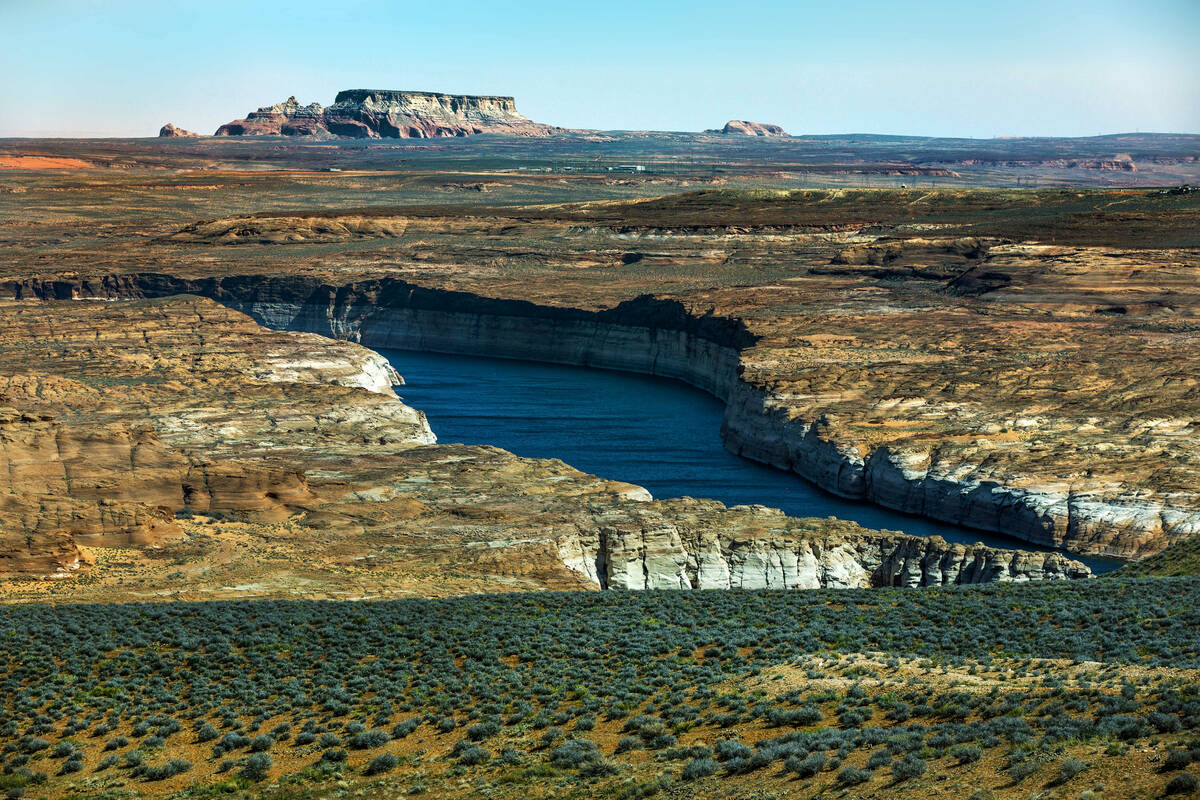Nevada leads as 40-year low is reached in Colorado River water use
Efforts to stretch the overused Colorado River appear to be working: The total amount of water used across Nevada, California and Arizona is the lowest it’s been in 40 years.
The reduction is the result of several factors, including a good snowpack year allowing for more use of groundwater, increased conservation efforts and millions of dollars in Inflation Reduction Act funding to incentivize farmers to use less water.
“Congratulations to the water users in Arizona, California and Nevada,” former Bureau of Reclamation Commissioner Brenda Burman, who manages the Central Arizona Project, said in a statement. “Through mandatory reductions, extraordinary conservation, investments and sacrifice, we are demonstrating our ongoing commitment to protect all who rely on the Colorado River.”
The downward trend is reflected in a recent Reclamation report, which takes into account water that’s recycled and returned to Lake Mead and other reservoirs. It shines some hope for a future adapted to the will of a shrinking river that delivers water to 40 million people and is battling water loss to climate change.
Tom Buschatzke, director of the Arizona Department of Water Resources and the state’s chief water negotiator, said in a statement that the report is a testament to years of hard work to reduce water use all around.
“This is further evidence of the herculean efforts on the part of the Lower Basin states and our water users to conserve Colorado River water at truly unprecedented levels,” he said.
But that success could be fragile.
Inflation Reduction Act funding is set to run out and Colorado River guidelines will expire in 2026, throwing out the framework for how the river is allocated by state. And two coalitions of states, the Lower and Upper Basins, haven’t come to an agreement for the best way to do so or who should have to bear the brunt of further cuts.
“There’s no agreement, so it’s hard to say,” Sarah Porter, director of Arizona State University’s Kyl Center for Water Policy, said in a phone interview Wednesday. “But I think everyone is expecting — at least here in the Lower Basin — that there will be less Colorado River water available.”
Drought, aggressive conservation continue in Las Vegas
Studies have long documented that agriculture, specifically alfalfa and hay, are the biggest guzzlers of Colorado River water by a large margin.
Nevada leads the pack by only using about 62 percent of the small amount of water it’s allowed to draw from the river, with Arizona following with 67 percent and California with 84 percent.
In Las Vegas, where agriculture is minimal compared with the rest of the Lower Basin, much of the community’s success in whittling down total use can be attributed to local conservation initiatives anchored by the Southern Nevada Water Authority.
A 2021 Nevada bill took aim at removing what it called “nonfunctional turf,” or grass that doesn’t serve a defined recreational purpose. The water authority has also targeted homeowner lawns, offering generous financial incentives to convert them to desert landscaping.
The list of Southern Nevada’s efforts goes on, including converting water-wasting evaporative cooling air conditioning systems and limiting pool sizes.
“I’m very confident in cities’ ability to adapt,” Porter said. “Where I feel less hopeful is what happens to Colorado River-dependent agriculture. There aren’t many strategies available.”
Contact Alan Halaly at ahalaly@reviewjournal.com. Follow @AlanHalaly on X.

















